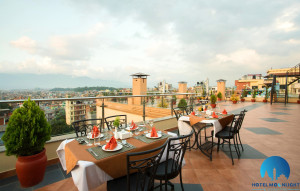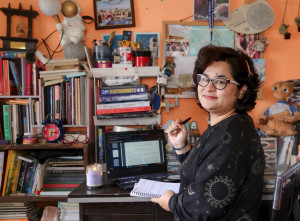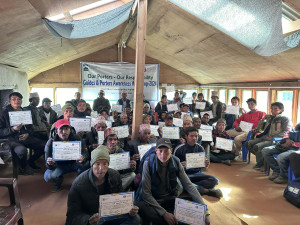Culture & Lifestyle
Nepal photography industry is unkind to newcomers
Pabindra Shrestha shares his journey from a self-taught photographer to becoming a mentor and pageant director.
Aarya Chand
Pabindra Shrestha’s journey into photography was not straightforward. Born in Patan, he grew up in a family where creativity was not the obvious career path. “My mother is a housewife, and my father runs a metal shop,” he says.
His first encounter with a camera came unexpectedly. “A friend lent me a reel camera, but when I was using it, it started raining, and the reel got ruined,” he says. He also recalls the moment that ignited his passion. “When I was in grade 11, my brother gifted me a high-end DSLR. That’s when my enthusiasm for photography grew. I watched numerous YouTube tutorials, but they didn’t help me determine whether my photos were good. So, I practised extensively before learning the craft formally.”
Shrestha’s formal training began at Image Park, where he took a seven-day course on portrait photography. “Later, I took one-on-one classes with Sushant Shrestha, a photographer and a retoucher. He taught me about lighting and editing,” he shares. “I practised lighting a lot because that’s crucial in photography.”
Shrestha’s professional journey started with capturing weddings. “A friend asked me to do wedding photography and paid me Rs1,000. Then KS Photo Studio paid Rs2,000 for my works. I did five or six projects for the studio before deciding to start on my own.”
Shrestha entered fashion photography by accident. He shares, “I would often ask my friends and their girlfriends to model for me. However, a standout moment was during Miss Nepal Peace, where my friend’s sister was a contestant. I had purchased a Rs500 ticket, but she was eliminated in the first round. With some free time on my hands, I began capturing photos of all the participants and posted them on my newly established Facebook page.”
The response was immediate. “I received a lot of inquiries, and the main company owner called me. I was scared that they’d scold me for sharing the pictures without permission. But instead, they liked my work and asked me to collaborate with them,” he says. That moment marked Shrestha’s breakthrough in fashion photography, leading him to work with names like Next Models Nepal and IEC Management.
Despite the opportunities, financial struggles have always been a concern for him. He says, “I don’t come from a rich background. A normal camera costs around Rs0.2 million. If I had asked my father, he would have managed somehow, but I didn’t want that.” For Shrestha, keeping up with equipment costs is an ongoing challenge. “Every two to three years, we have to upgrade cameras because they get outdated. Even a memory card is expensive,” he adds.
Shrestha also notes the lack of mentorship in Nepal’s photography industry. “Senior photographers don’t guide us. They have an attitude of ‘who are you?’ and charge extremely high for training. For instance, a ten-day course that cost Rs0.1 million in 2018-19 now costs between Rs0.3 and 0.4 million.” Another persistent issue he raised is unpaid work. “Clients make you work, but after the job is done, they disappear without payment. I still have a lot of bounced cheques with me.”
Before becoming a photographer, Shrestha worked as a teacher. “I taught passionately, but my loud teaching style caused throat issues. I was teaching in colleges and schools, and tutoring non-stop,” he says. Eventually, he left teaching and sat at home jobless for a month before getting his first photography gig.
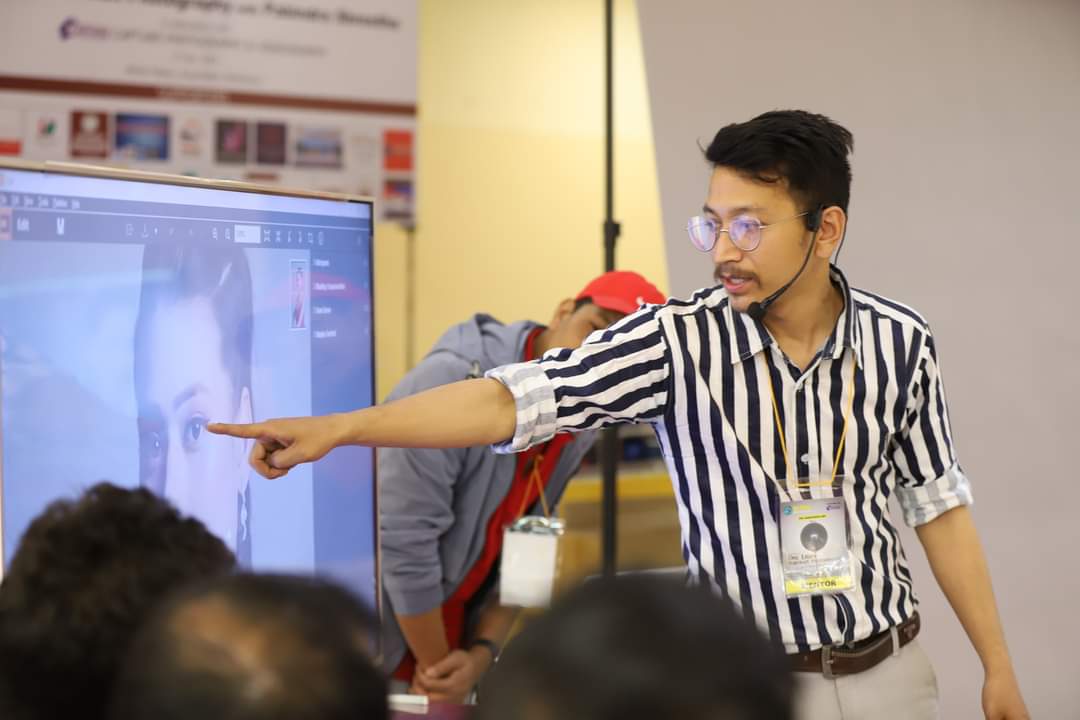
Shrestha has little time for personal life. He says, “I rarely sit and eat with my parents. There’s no ‘me-time’ in this profession.” However, he has never second-guessed his decision. “I’ve invested too much in this as an art. Financial struggles might tempt me to go abroad, but even then, I’d continue photography. I believe I have the capacity to establish myself.”
Talking about the evolution of his photography styles, he shares, “In the beginning, I just clicked randomly. Then I learned that lens choice matters, then lighting, then composition. It’s all a cycle.” Shrestha finds wedding photography particularly rewarding. “It incorporates different types of photography—fashion, environmental portraits, jewellery, macro photography. Except for wildlife and nature, you experience a bit of everything,’’ he says.
His approach to working with clients is centred on comfort. “I joke with them, praise their beauty—it helps them pose confidently. I never get angry. If a client doesn’t like a picture, I try again.” One of his most cherished projects was working as a photographer on Himalayan Roadies in 2019, a reality show that brought together adventure and youth culture. “I always wanted to be part of its crew. A friend referred me, and after an interview with Aman Pratap Adhikari (the director of the show), I got selected.”
It was a transformative experience. “Before that, I thought I was perfect in photography. But after seeing professionals at work, I realised I was just a beginner. I learned that I need diverse experiences to grow,” he says. Another highlight in his journey is Model Hunt Nepal, a project he has worked on for seven seasons since 2016. He says, “I feel like it’s my own, even though it isn’t.”
Recently, Shrestha has expanded into the pageant industry as a director after realising that many winners were not receiving the promised opportunities. ‘‘I worked with various pageants. People assumed I was part of the organisations that failed to support the winners. As a result, models hesitated to collaborate with me,’’ he shares.
This realisation of how damaging it was for the models, who were left without the career boosts, led him to create his own platform, Ace of Model and Ace of SEE. Launched in 2023, Ace of Model connects aspiring models with industry professionals through training, mentorship, and career-building opportunities and Ace of SEE launched in 2024 is focused on supporting SEE students. He says, “My aim is fairness—no nepotism, no bribing, and delivering at least 80 percent of what we promise. I recommend models to projects where I have influence and try to get them to work.” Currently, he is working on the new season of Ace of SEE.
In addition to photography, he mentors at the Kathmandu Photography Association (KPA) and Chitwan Photography Association (CPA), where he shares his expertise with aspiring photographers. His biggest advice? “Don’t copy others. Find your style. If your work is unique, people will gravitate towards it,” he shares.




 7.12°C Kathmandu
7.12°C Kathmandu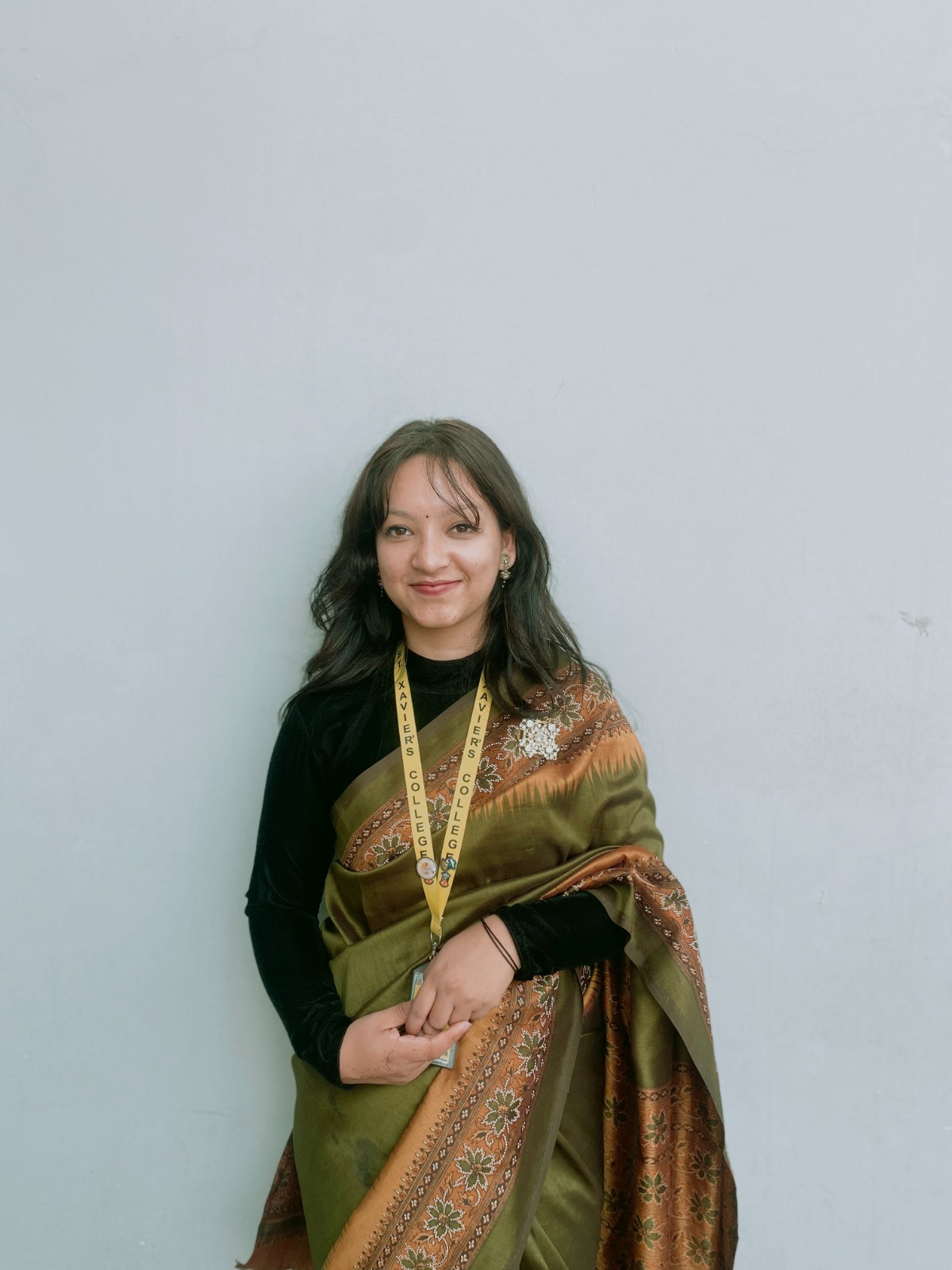
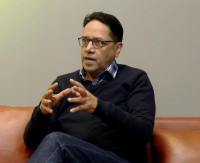

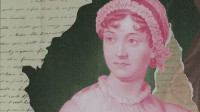


.jpg&w=200&height=120)
